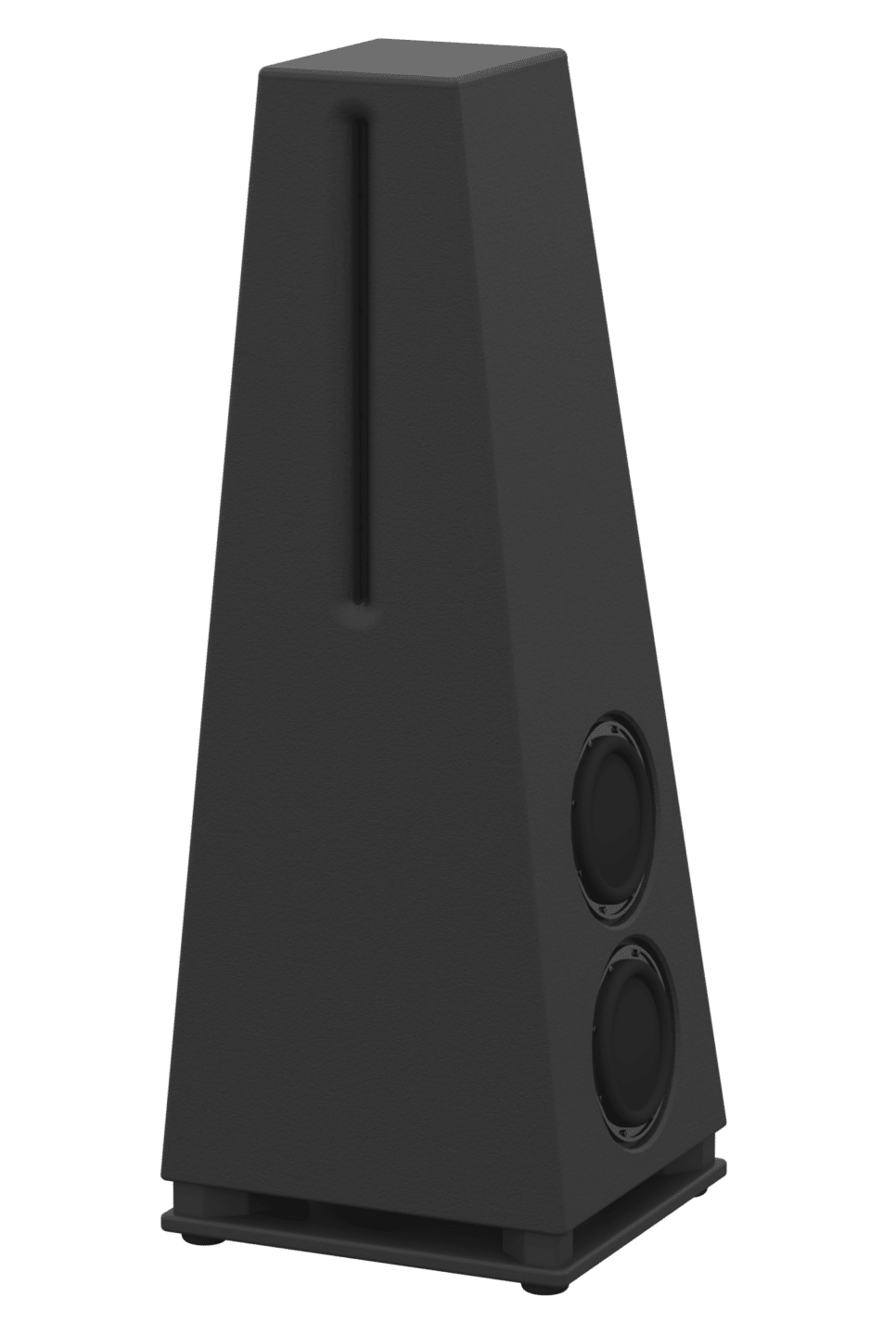This subject came to mind as I was able to listen some more to big Dali EpiKore 11 speakers compared to the same tracks on my much smaller Joseph Audio speakers.
The size difference is pretty enormous: the Dali Epicore are huge speakers with tweeter, super tweeter, 4 X 8" woofers, and a 6.5 inch mid driver. Grabbed this pic from the web:
Vs...my puny little Joseph Audio Perspective 2 speakers, at 36" tall, 8.5" wide, with two widdle 5.5" SEAS drivers and a tweeter:
Basically I listened to a bunch of familiar tracks on the Dali speakers, came home and listened to the same tracks on my Joseph speakers.
The Josephs have a reputation for sounding much bigger than they look, and that they do. Surprisingly rich sounding for a small, skinny floor stander, with massive soundstaging and imaging capabilities.
Interestingly, the two speakers are not far off in frequency specs - the Josephs are spec'd down to 35Hz, and the Dali speakers despite their massive size and woofer compliment advantage, just go down to a bit lower, 29Hz.
The differences I heard were:
First, the soundstaging in my system was significantly "bigger." My speakers are more spread out and closer to the listening position relative to how the Dalis were set up. So in this case the scale of the soundstage - size, width, depth - was actually bigger on the smaller speaker system. And it was surprising how well the Joseph speakers kept up in terms of the "size of the bass" - many of the centralized bass synths or bass guitars/drums sounded vary large and substantial on the Josephs even having just heard them on the Dalis.
But the real difference was the overall sense of scale, of image heft and size, on the Dali speakers compared to the Josephs. I've mentioned the "pear shape" sensation to imaging and image substantitiveness on most systems. That applies to mine too. The Dalis "hit harder" and more solid in the bass, with a bit more bass depth and so a bit more size, but not a really big difference in "bass image size" so a stand up bass sounded similar sized on the Josephs. HOWEVER as we go up the frequency range, like most speakers I hear, the Joseph sonic images loose a sense of size and acoustic power, so things get smaller and smaller until drum cymbals and high end synth bleeps and blips sound more teeny.
But on the Dali speakers, while still "pear shaped," there was more size and heft maintained from bottom to top, so drum snares sounded bigger, higher woodwinds sounded more life sized, acoustic guitar strings sounded bigger, fatter, and even in electronic music, some bleepy blippy stuff I love, even the high register notes, sounded thicker, bigger, more solid and dense. So the speakers maintained an overall sense of scale and acoustic presence and power from top to bottom that just made everything sound bigger and more substantial, not just the bass parts.
And this survived the "close my eyes test" very well. I've had a number of very large speakers "shrink" in sound when I close my eyes and just concentrate on the sound. But these didn't, it was Big Sound.
Why? I don't know. I leave that to the speculation of others more competent in this thread. Just thought I'd share that comparison....FWIW....



